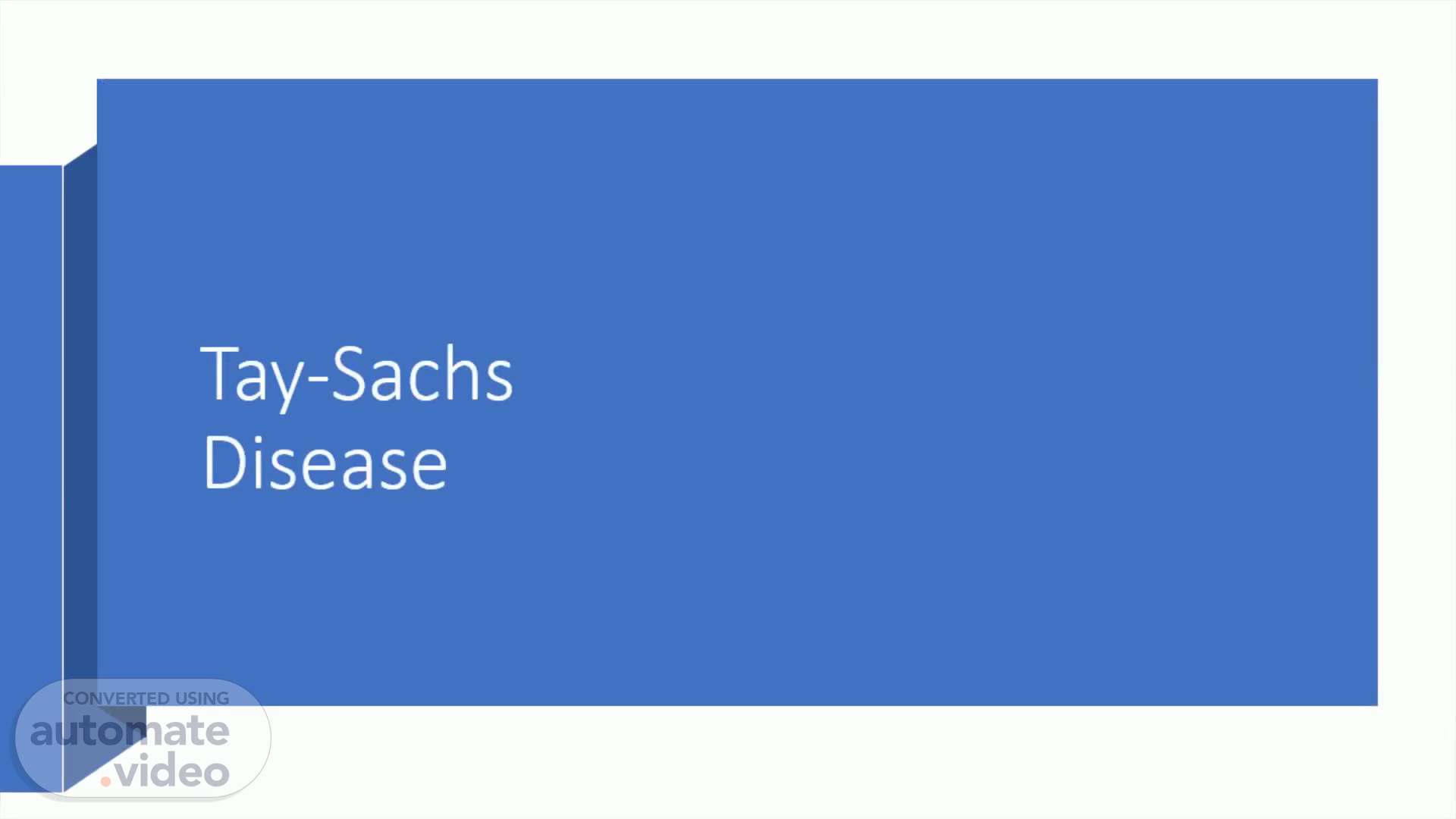Page 1 (0s)
Tay-Sachs Disease. - Samridhi, Janna and Jane. Diagram Description automatically generated.
Page 2 (17s)
What is Tay-Sachs Disease?. Tay-Sachs disease (also known as TSD) is a neurodegenerative disorder caused by a genetic mutation on the HEXA gene. HEXA encodes for the alpha subunit of beta-hexosaminidase A, an enzyme that assists in the breakdown of gangliosides in the brain and spinal cord (NORD 2015)..
Page 3 (44s)
Genetics. A picture containing text Description automatically generated.
Page 4 (1m 49s)
Genetics. Tay-Sachs Disease subtypes: Acute Infantile Tay-Sachs Disease Subacute Juvenile Tay-Sachs Disease Late-Onset Tay-Sachs Disease Type of genetic mutations involved. Diagnosis.
Page 5 (5m 16s)
Protein Biochemist. What role does protein plays to cause diseases? Hexosaminidase A enzyme Deficiency of protein resulting in Tay-Sachs..
Page 6 (5m 16s)
Protein Biochemist. Effects on different state of Tay-Sachs depending on the enzyme In infantile Tay-Sachs complete lack of hexosaminidase A. In juvenile and late-onset Tay-Sachs disease, there minimal but still some residual hexosaminidase A enzyme activity..
Page 7 (5m 17s)
Metabolic complications. What is metabolism? - Digesting food and nutrients - Operating the brain and nerves - Muscle movement.
Page 8 (5m 17s)
Tay- Sachs disease and Lysosomes relationship. Lysosomes are found in every eukaryotic cells. Responsible for breaking down cellular waste. Low pH = Acidic.
Page 9 (5m 18s)
How does Tay- Sachs affect the body?. Absence of Beta Hexosaminidase A will lead to lysosomal storage disorder. GM2 Ganglioside will accumulate and lead to cell death..
Page 10 (5m 18s)
Thanks for listening .
